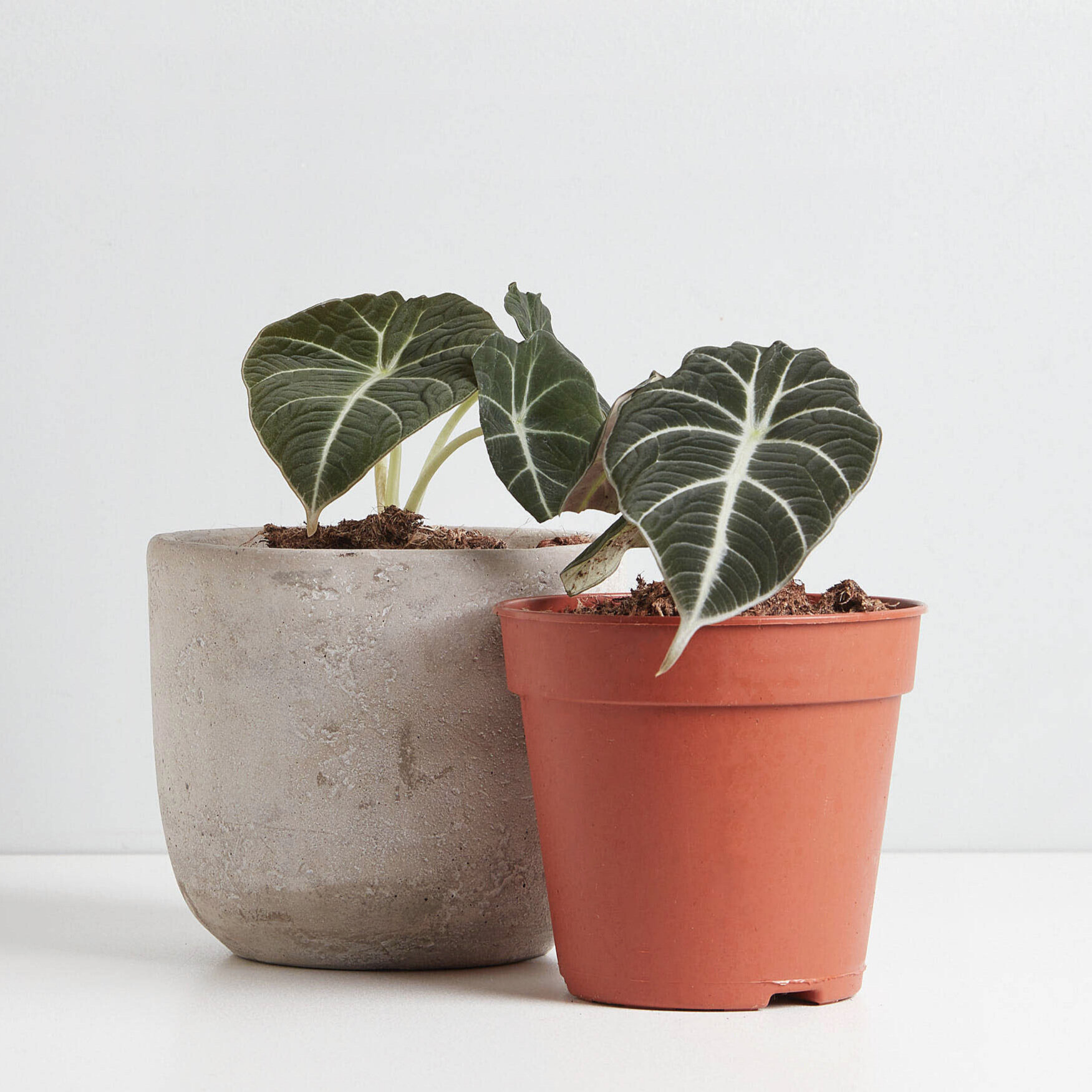Alocasias - it’s a love thang.
I’ll admit it. Alocasias get a bit of a bad rap for being a diva. And whilst they may not always be the best plant for beginners, with a little diligence, the reward in beauty and elegance is well worth that extra special care.
With around 80 different species native to subtropical Asia and eastern Australia, they are a tropical bird at heart, so it’s important to remember this when thinking about their indoor care.
In their natural habitat, they grow on the forest floor beneath the tree canopy. But shade in the outdoors does not mean shade indoors - medium to bright indirect light is what your gal needs to grow. Although a dash of morning light is ok, direct sun will cause the leaves to burn, so avoid placing her in a position that’s exposed to direct sun for a prolonged period.
The next thing to think about when replicating a tropical jungle is warmth and humidity. They do not like to be cold, so avoid putting her too close to the window in winter time, and avoid cold draughts and heating units. Bump up the humidity by grouping plants together. Place a pebble tray underneath your Alocasia, mist regularly or even better, use a humidifier - especially great in dry climates like here in Melbourne.
In regards to watering, it can vary slightly from species to species, but the general rule is to keep the soil very slightly on the damp side. By this, I mean water thoroughly, allow the water to drain completely, then water again when the top few centimetres of soil is dry, but the lower levels of soil are still slightly damp. You should be able to feel this with the tip of your finger, when testing. Although some species can be a bit more tolerant, in general, they do not appreciate drying out completely.
On occasion, despite all best efforts, in winter she may shed all her leaves and decide to play dead. If this happens, never fear. In most cases, she’s just gone dormant, and once the weather warms, like a sleeping beauty she will rise again.
“I try not to be a jerk. Really I do.”
Troubleshooting
Why are my Alocasia leaves drooping?
In most cases, droopy leaves are often caused by over or under watering, so best to do a soil check straight off the bat. If watering doesn’t cure the problem, pests, insufficient light, or insufficient nutrients in the soil could also be the issue.
Why are there spots on the leaves?
Alocasias can be sensitive to salts, minerals, and chlorine in tap water, and sometimes this can cause leaf spotting. To solve this, let the water sit out for a few hours or overnight, to allow the excess minerals to evaporate. Alternately, use filtered or distilled water.
I’ve got a bug problem!
I’ve found Alocasias to be prone to spider mites & green aphids, although generally spider mites can be avoided with ample humidity. Usually when this happens, the first thing you’ll notice is distortion or discolouration on the leaves. On careful inspection, if you see any little green critters or webbing on your plant, immediately isolate the plant from the rest of your collection, to avoid spreading. Carefully rinse the leaves and the stems with unscented castile soap and water - a gentle stream under the tap is fine - and allow to dry.
Follow up with an insecticide spray of Neem oil & castile soap. Mix the Neem as indicated on the packet, then add about a tablespoon of unscented soap to the spray bottle. Spray the plant thoroughly, making sure to cover the undersides of the leaves and stem crevices. Usually I’ll spray about 3 times in the first week, then weekly after that until they are completely gone. This has always been my go-to method, and so far has worked every time.
Is she dead?
As long as they have not been overwatered, Alocasias are often able to bounce back, even if they have lost all their leaves, due to the reserve energy they store in their thick tubers. If your Alocasia is looking worse for wear, reduce watering and keep the plant warm. During spring and summer, you can also place them in a shaded area outside to encourage regrowth.
Is it worth it?
Though it may take a little more dedication than your average house plant, frankly, I could spend all day with them, so that little extra care is nothing! Alocasias are beautiful, stately, unique and interesting plants that add a wow factor to your indoor jungle that can’t be beat.


